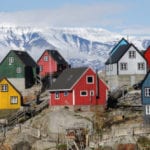 Politics
Politics  Politics
Politics  Weird Stuff
Weird Stuff 10 Eggs-traordinarily Odd Eggs
 History
History 10 Desperate Last Stands That Ended in Victory
 Animals
Animals Ten Times It Rained Animals (Yes, Animals)
 Mysteries
Mysteries 10 Devastating Missing Child Cases That Remain Unsolved
 Creepy
Creepy 10 Scary Tales from the Middle Ages That’ll Keep You up at Night
 Humans
Humans 10 One-of-a-kind People the World Said Goodbye to in July 2024
 Movies and TV
Movies and TV 10 Holiday Movies Released at Odd Times of the Year
 Politics
Politics 10 Countries Where Religion and Politics Are Inseparable
 Weird Stuff
Weird Stuff 10 Freaky Times When Famous Body Parts Were Stolen
 Politics
Politics The 10 Most Bizarre Presidential Elections in Human History
 Weird Stuff
Weird Stuff 10 Eggs-traordinarily Odd Eggs
 History
History 10 Desperate Last Stands That Ended in Victory
Who's Behind Listverse?

Jamie Frater
Head Editor
Jamie founded Listverse due to an insatiable desire to share fascinating, obscure, and bizarre facts. He has been a guest speaker on numerous national radio and television stations and is a five time published author.
More About Us Animals
Animals Ten Times It Rained Animals (Yes, Animals)
 Mysteries
Mysteries 10 Devastating Missing Child Cases That Remain Unsolved
 Creepy
Creepy 10 Scary Tales from the Middle Ages That’ll Keep You up at Night
 Humans
Humans 10 One-of-a-kind People the World Said Goodbye to in July 2024
 Movies and TV
Movies and TV 10 Holiday Movies Released at Odd Times of the Year
 Politics
Politics 10 Countries Where Religion and Politics Are Inseparable
 Weird Stuff
Weird Stuff 10 Freaky Times When Famous Body Parts Were Stolen
10 Things You Should Know About Scotland
The Scotland of the imagination is a land of rolling green hills, kilt-wearing bagpipers, and crumbling castles. While you can find all of this in Scotland, there is a great deal more to this fiercely patriotic country. With a land area equal to the state of Maine in the US, this small country is chock-full of fascinating history.
10 Fortingall Yew
The 5,000-Year-Old Tree
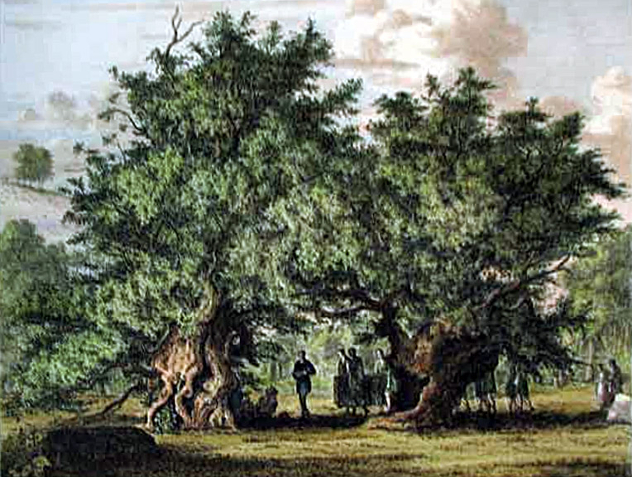
In the heart of Scotland stands one of Europe’s oldest trees, the Fortingall Yew. Experts speculate that the tree may be 5,000 years old. It is named for the small village in which it is found—Fortingall, in Perthshire. The land surrounding Fortingall contains some of the most amazing archaeological sites in Scotland, from plague burial grounds to the remains of a 1,300-year-old monastery. While the Yew first sprouted long after the first people moved to Scotland over 12,000 years ago, it’s probably as old as the first settlements at Fortingall.
The Fortingall Yew is significant not just because of its age, but because of the intriguing folklore surrounding this ancient living entity. Yews are part of the landscape at countless British churches—many times the trees were planted at the same time as the church was founded. The Fortingall Yew predates its sister chapel by thousands of years, leading experts to believe that it was an important site for pagan rituals long before Christianity came to Perthshire. It was common practice for early Christians to build over sacred groves and other existing religious sites in order to promote the dominance of their own religion. Folklore linking the Fortingall Yew to Christianity soon built up around it.
Legend says that Pontius Pilate, the judge and Roman governor who sentenced Jesus to crucifixion, was born by the tree and played in the shade of the Yew during his childhood. This legend, while unlikely to be factual, tied Scotland to the history of Christianity in a tangible (if mythological) way. New Age practitioners have also been attracted to the Fortingall Yew, claiming the tree was important in the rituals of the druids, and that the druids did not built near it because of its immense energy. Today the tree is badly damaged and even had to be cut back to save it from rot, but it still stands strong in the heart of Scotland, reminding visitors of the sacredness of ancient trees.
9 Redheads

A rumor has been floating around online that redheads could be extinct in a hundred years. It arose when a Bradford University professor was misquoted in The Daily Mail, which reported him saying that we would see redheads disappear through migration and intermarriage. What he meant was that their numbers may dwindle, although they will not disappear entirely.
If the redhead gene lives on anywhere, it’s southeast Scotland, where 40 percent of the population are carriers. All told, the British Isles are home to some 20.4 million people who carry the redhead gene. Being redhead, which is linked with having very pale skin, may be an evolutionary advantage in the far north where it is so often cloudy. Humans need a significant amount of vitamin D and redheads are generally able to get more vitamin D after less time in the sun than people with darker complexions.
Redheads make up a bigger proportion of the population than they do south of the border, with 6 percent of Scots being natural redheads. Although other researchers suggest that this number may be as high as 1 in 8, or 12.5 percent. It’s this large population of red-haired people that made it a natural location for the UK’s first ever Ginger Pride Parade, which was held during the Edinburgh Fringe Festival in August of 2013. It was a refreshing party to counter the bullying that many redheads experience. South Park popularized “Kick a Ginger Day” which school children have done in real life. The studies on hidden redhead genes are hoping to counteract prejudice and shed light on ancestral migration.
8 Hadrian’s Wall

Rome first invaded the southern shore of Britain in 55 BC, near the end of the Iron Age. Small invasions continued for the next 100 years until finally Emperor Claudius sent in 40,000 troops in 43 AD. They reached Scotland, which the Romans called Caledonia, around 79 AD. Their invasion failed, as did several subsequent attempts to conquer it. The warring tribes of the north were not vulnerable to foreign invasion and the best Rome could hope for was civil trading relations, a fact Roman Emperor Hadrian knew well before he visited the area in 122 AD.
At Hadrians behest, 15 years of construction resulted in an impressive fortification lining the northernmost reach of the Roman Empire in Britain, dubbed Hadrian’s Wall. It was 117 kilometers (73 mi) long and had been constructed in small stretches of eight kilometers (five miles) at a time. Sections were separated by forts which also served as trading posts. The wall was 3 meters (10 ft) wide and varied in height from five to six meters (16 to 20 ft). While the exact reason for building the wall remains unclear, it is evident that Hadrian was attempting to fortify his defenses before attempting to conquer land further north. The Scots will tell you Rome was afraid of them and built the wall to keep the terrifying warriors out of Rome.
After Emperor Hadrian passed away in 138 AD, Antoninus Pius became emperor. He wasn’t keen on Hadrian’s Wall and wanted to expand further north, building the lesser known Antonine Wall about 160 kilometers (99 mi) north of the previous fortification. This wall was built out of turf and was 60.8 kilometers (37.8 mi) long. Attempt after attempt failed to conquer the Highland tribes, even with this new wall which had many more forts and likely more troops than Hadrian’s Wall ever did. Antoninus’s efforts failed and his successor, Emperor Marcus Aurelius, abandoned the wall, relocating his troops back to Hadrian’s Wall where they stayed until the fifth century, when Rome withdrew from Britain.
The remnants of the wall were declared a World Heritage Site in 1987. Visitors to the wall can fully explore the unguarded site, but the archaeologists among us would remind visitors to be mindful of the site’s ancient history and be careful to not damage the historic structure.
7 Edinburgh Vaults
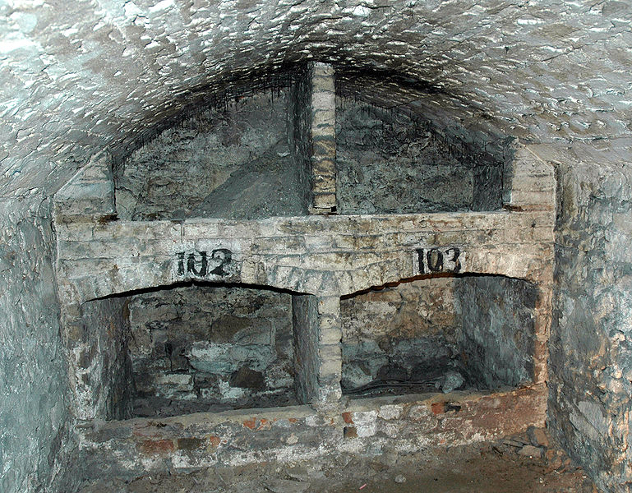
Beneath the streets of Scotland’s capital, Edinburgh, lies a series of underground chambers that today are referred to as the Edinburgh Vaults. These vaults were not, as is commonly the case, the city before streets were raised, or secret tunnels built to transport illicit goods. They are beneath South Bridge, the first street that was constructed as a purpose-built shopping district. Although South Bridge appears by all accounts to be a street, it is actually a bridge connecting two hillsides, Southside and Old Town. The bridge had 19 arches and was up to 9.5 meters (31 ft) in places, as well as reaching nearly seven meters (22 ft) below ground in others. Construction on the bridge wrapped up in 1788.
Over time, the street/bridge became populated by shops and the lower levels by basements and storerooms. The street suffered damage over time because it had not been properly waterproofed and the storerooms below ground had to be abandoned. So as legitimate businesses moved out, illicit trade moved in.
The deeper spaces were closed off and turned into chambers for everything from underground pubs to illegal tenement housing for poor immigrants. During Ireland’s Great Famine, Scotland saw an influx of immigrants from Ireland, and the vaults became a refuge for the most underserved populations. The area was informally known as Little Ireland in the mid-1800s. There is little official documentation of what went on below South Bridge, as people making use of the space weren’t likely to write about it since they were there illegally. The chambers were abandoned in the late 1800s only to be rediscovered in 1988 by someone exploring the space below their building.
Today the Edinburgh Vaults are thought to be one of Edinburgh’s many haunted locations. Hearing voices, being scratched, pushed, and feeling cold pockets of air are all common claims by visitors. A haunting legend says that the infamous 1820s West Port murderers, Burke and Hare, stored the bodies of their 16 victims here before selling them to Edinburgh’s Doctor Robert Knox to use in anatomy class. Before turning to murder, Burke and Hare dug up corpses to sell to medical schools. After Burke was caught and hanged, his corpse was dissected in public, items such as wallets were made from his tanned skin, and his skeleton was put on display in Edinburgh Medical College, where you can visit it today.
6 Violence And Football
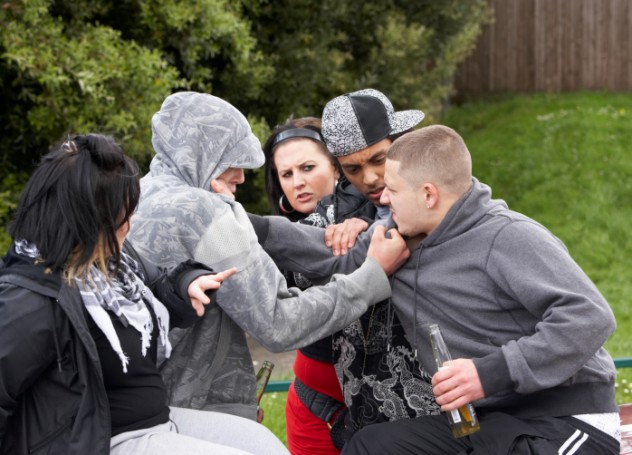
Glasgow has long been known as the murder capital of Europe. In fact, it’s ranked third. Studies report Glasgow has more violent incidents per capita than Rio de Janeiro or New York City, although their murder rate is half that of New York City. Unlike New York, guns are rare in Glasgow, so violence happens face-to-face with knives and fists. Certainly it is the most dangerous place in the United Kingdom, with significantly more murders per capita than London (2.7 per 100,000 versus London’s 1.67 per 100,000). The crime rate has dropped significantly in the last 10 years, but Glasgow has a history marred by religious violence, high poverty, and vicious sporting rivalries.
Many pubs have notices reading “No football colours allowed” because this is a city where walking into the wrong pub wearing the wrong color can incite a brawl. The fiercest rivalry is between the two Glasgow teams Rangers and Celtic (collectively known as the Old Firm), the two most successful clubs in Scotland. The rivalry runs along deep religious divides, with the Rangers representing the Protestants and aligning themselves with the British monarchy while Celtic represents Roman Catholicism and dress in green to align with Ireland. In fact, both teams were founded by members of their respective religions: Celtic was founded by a Catholic monk while Rangers was founded by a group of Protestant rowers.
Even today, the prejudice against and for these particular religious affiliations affects everything from the crews hired to clean the field to the managers who run the entire club. Legislation has attempted to crack down on the violence, but it is still there. From bombs in the mail to racist slurs and tasteless taunts about death, nothing is off limits for some diehard fans.
The violence doesn’t end when the brawls are broken up after the game. Recent research from St Andrews University presented solid evidence that domestic abuse increases considerably on the days of Old Firm games. Most victims of these cases are female, and with the low rate of reporting by victims the actual rate is probably much higher than the study shows.
5 Inventions

Scotland lays claim to countless inventions that we take for granted today. While some inventors are well known, such as the controversial Alexander Graham Bell (a native Scotsman who immigrated to North America), others have never received proper credit for their contributions.
Kirkpatrick MacMillan invented the pedal bicycle, although others took the credit and profited from copies of his invention. The ubiquitous ATM is another Scottish invention. John Shepherd-Barron, a Scotsman born in India, is said to have come up with the idea while in the bath; the first one was installed in 1967. And although the heyday of the fax machine may be over, it was a crucial piece of technology for decades. Alexander Bain began work on the first rudimentary fax machine in the mid-1840s.
Taking a look around the kitchen we find more Scottish inventions in action. The microwave is a staple in today’s modern kitchens, the principles of which were laid out by James Clerk Maxwell in the mid-to-late 1800s. He studied the electro-magnetic spectrum and noted the waves on which the energy traveled. Artificial cooling was invented by William Cullen in 1748. At the time, it was thought to be useless in everyday life—it wasn’t until later that it was implemented in refrigerators. And if you open up that fridge to pour yourself a gin and tonic, you can thank George Cleghorn, the Scottish doctor from the 1700s who combined quinine, tonic, and gin as a way to combat malaria.
Take your G & T into the living-room and take a moment to remember John Logie Baird, who invented both the first television in 1926 and the first color television in 1928. And if you end up having a few too many gins? You’ll probably need to make use of the device invented by Alexander Cumming, a Scottish watchmaker. He patented the first flushing toilet in 1775. Archaeological evidence suggests that the first toilets ever were possibly built in Orkney, Scotland in 3,000 BC. Thank you Scotland, for all the useful ideas.
4 Viking Ties
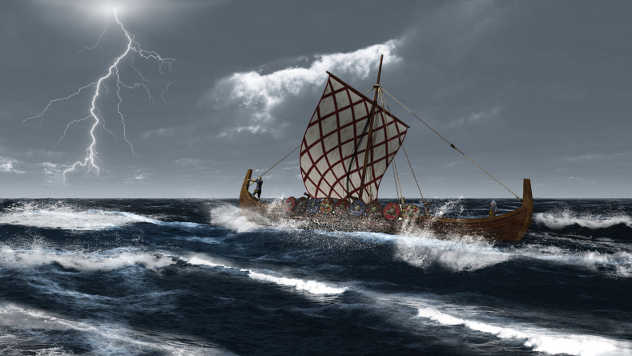
The Norse made a lasting impact on Scottish culture. They first conquered many of Scotland’s smaller islands in the 11th century before taking on the main British Isle. While the stereotype of Vikings may be vicious and bloody, the real Vikings were very different. Family life was very important to them and they and took their wives with them once they had successfully conquered a place. Scotland, to the Norse, was a vital part of their main trading route, which expanded from North America’s Newfoundland all the way to Baghdad, with their reach extending even further afield than that.
The Vikings, as scary as they may have been in battle, actually warned their fellow countrymen to be wary of Scotland. A Norse travel guide of sorts from the 1200s depicted Scotland as a place that was dark and dangerous. They described the language as impossible to understand and the people as violent and terrifying. They also feared the seas surrounding Scotland because of the unpredictable weather patterns and strong gale winds. The Vikings didn’t plunder the native population so much as they went after unguarded places such as monasteries—because the Scots were not going to give up their goods without a fight.
The Vikings did settle in Scotland and their lineage carries on today. Words that come from Old Norse are still in use in the local Scots language, such as “muckle,” which means large, and even “kilt,” which comes from the Old Norse word kjalta. There are many in Scotland who consider their culture to be closely related to that of Scandinavia, with a shared interest in dark humor and a proud lineage of rebellious warriors.
3 Unicorns

Scotland’s official animal is the unicorn. Yes, their famous native animal the unicorn. It’s not so surprising considering the love Scotland has for legend. Unicorns were revered by the Celts, the symbolism being much the same as it is today: grace, purity, healing, and happiness. The creature was printed on gold coins when King James III was in power between 1466 and 1488 AD. The Scottish Royal Arms had two unicorns on it, and a unicorn is still a part of the United Kingdom’s Royal Coat of Arms alongside the lion.
Scotland is no stranger to mythological creatures, whether modern or ancient. The first sighting of the infamous Loch Ness Monster was some 1,500 years ago. It’s said that the beast jumped from the lake and ate a farmer. The first photograph was taken in 1934 and since then thousands flock to Inverness every year to try and catch a glimpse of the supposed monster. Some of the other terrifying creatures that are said to make their home in Scotland have been mentioned here on Listverse before, such as the nuckelavee, who caused disasters on the Orkney Islands or a spooky portent called the beane nighe that cleans the blood off people who are going to die.
The unicorn, even with its angelic qualities, is depicted chained up. A unicorn could only be tamed by a virgin and so they were considered very dangerous in the wild. While the other animal of Scotland, the red lion (which was adopted when Scotland’s King James VI took the throne after England’s Queen Elizabeth I), is not chained in official iconography. Perhaps it is the unicorn’s fierce love of freedom that resonates most strongly with Scotland.
2 Strange Games And Sport Bans

There is a tumultuous and fascinating history with sport in this northern land. Scotland has long been considered the motherland of golf, where it was invented in the 15th century. It caught on so quickly and was so popular that King James II had the game outlawed because he believed it was preventing his men from training properly for war. Golf wasn’t the only sport to get banned: Football (soccer) was made illegal by King James I in 1424. He was displeased with the roughness of the game and thought it was unnecessarily injuring the players. The ban didn’t last and the very first international football game was held in Scotland in 1872.
Football and golf are immediately associated with Scotland, but there is also less well-known sport that the Scots excel at. That sport is elephant polo—like regular polo but played atop elephants. This game is normally played in Nepal, India, Thailand, and Sri Lanka so it’s surprising that Scotland has for many years been top of the ladder. Variants of the game originated in India but modern elephant polo was co-founded by James Manclark of Scotland in the 1980s. The elephants have two people on their backs, a driver and a player. The game is played on a field that is 100 meters (328 ft) in length by teams of four elephants, with their riders attempting to handle the ball with ridiculously long 2.5 meter (96 in) playing sticks. There are strict regulations preventing the elephants from being overworked or mistreated.
1 Independence

Scotland is a sovereign state in the United Kingdom of Great Britain and Northern Ireland. Although it’s part of the UK’s constitutional monarchy, it has a lot of independence. Scotland’s education system is separate and governed from within Scotland. Scotland offers free water for its citizens, although oil and nuclear energy are governed by the UK. Although their their health system is part of the greater National Health Service, Scotland controls its implementation (which allows them to provide free prescriptions to everyone, something England does not do).
Scotland also has its own judicial system— unlike most western systems, courts can come back with a decision of guilty, not guilty, or not proved. The police force of Scotland are separate from that of the rest of the UK. Scotland also has its own distinct parliament, which is chaired by the First Minister of Scotland.
In 2014 Scottish people will vote on the independence referendum. This ballot has voters choose either yes or no on the question “Should Scotland be an independent country?” The voting population will be legal residents of Scotland aged 16 or older. It’s a heated topic and one that is rousing the political fever of even the most relaxed resident. As mentioned earlier, Scotland has never taken kindly to invaders but they were unified with England in 1707 when King James VI replaced the deceased Queen Elizabeth I. Immediately factions in Scotland wanted independence and some were never happy with the unification.
Robert Burns, the famous Scottish poet, penned the quote, “We are bought and sold for English gold. Such a parcel of rogues in a nation.” His quote reflects the sentiments of many of his fellow countrymen and in a year we will see just how many want complete separation from England.
Kristance is a freelance travel writer, editor and researcher. When she’s not compulsively traveling the globe, she’s looking up weird facts and making awkward YouTube videos. Connect with her on twitter @diggingtoroam, read about her adventures at diggingtoroam.com or have a laugh at her gif-filled instalaugh.tumblr.com.








